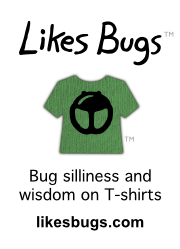The giant webs are in shambles, the midge clouds are thinning, and the adult Guatemalan Long-jaws (Tetragnatha guatemalensis) are disappearing. The remaining spiders are no longer making sheets, although they appear to continue contributing to the tangle webs. Young spiderlings are everywhere. I visited Starnes Island last Friday and Arkansas Bend Park yesterday. Yesterday I also spoke with people at Lake Tawakoni State Park and Wind Point Park. It’s time to say goodbye to the Guatemalan Long-jaws and their giant webs.
Adult Guatemalan Long-jaws are still present and some likely will remain until the first freeze. Their numbers are greatly reduced, though. It’s hard to say why their numbers are shrinking so drastically before the freeze, but I’m guessing it’s a combination of senescence, predation, starvation, and cannibalism, as well as getting wrapped in the webs as the storms rip the webs down. Here are examples of predation, starvation, and cannibalism:
Yesterday, staff at both Lake Tawakoni State Park and Wind Point Park told me that there is not much web left anymore and that the spiders no longer appear to be building. The web at Arkansas Bend Park was once impressive, engulfing about four 20-foot high Ash Juniper trees, but when I visited yesterday, the web was hardly recognizeable. We can blame this on the heavy downpour we had on October 22nd. Starnes Island was also hit hard, but it is now the busier place. This makes sense because I saw more midges at Starnes Island than at Arkansas Bend Park — they were still forming mating clouds, even if each cloud had only between five and fifty midges.
I’ve been expecting the males to disappear and only females to remain, but that hasn’t happened yet. Female spiders generally live longer than males, as they must remain to build egg sacs. There are obviously more females than males right now, but probably only two or three times as many. That’s just a guess though, based on how many are readily visible to me. More males show up after dark as they wander looking for females. They’re still mating too.
I find the progression of the webs fascinating. When the spiders were making great spans of fresh webs, their only predators were wasps and other kinds of orbweavers. I don’t think I ever saw anything else in a fresh web, except for Dewdrop Spiders (Argyrodes species). However, once the webs were soiled by the rain, jumping spiders would start crawling the webs, and I’d often see them with long-jawed spiders in their grips. Thread-legged bugs would also crawl the soiled webs, common everywhere but on Starnes Island. They scavenge for leftover food in spider webs, but I never saw them do anything other than walk and waver their bodies as if blowing in the wind. Lady bugs would also explore the older webs, and I have no clue what they were up to. I presume that it becomes possible for these critters to enter the webs once the silk has lost its stickiness.
This progression applied to the webs at Lake Tawakoni State Park, at Starnes Island, and at Arkansas Bend Park. I have not seen the late stages of the web at Wind Point Park, but I bet the same thing happens. Note that Bronze Jumpers (Eris militaris) became very common in all three places as the webs aged. I wonder if these jumping spiders are just more common near water. Perhaps they were after the young long-jawed spiders that hatched in the older webs.
The final stage is a web largely vacant of visible life, although I would still occasionally find young long-jawed spiders in them. Oddly though, the organic matter that did remain was neatly organized into pellets. Spiders can be pretty cleanly with their webs, particularly orbweavers, and the long-jawed spiders are orbweavers. Maybe they practice good sanitation and package excess food into small clumps. Or perhaps when rain, organic matter, and silk come together, these pellets are just a consequence of physics.
Although the giant webs are gone, I’ll continue to monitor Starnes Island. I also have several interesting discoveries left to share.





